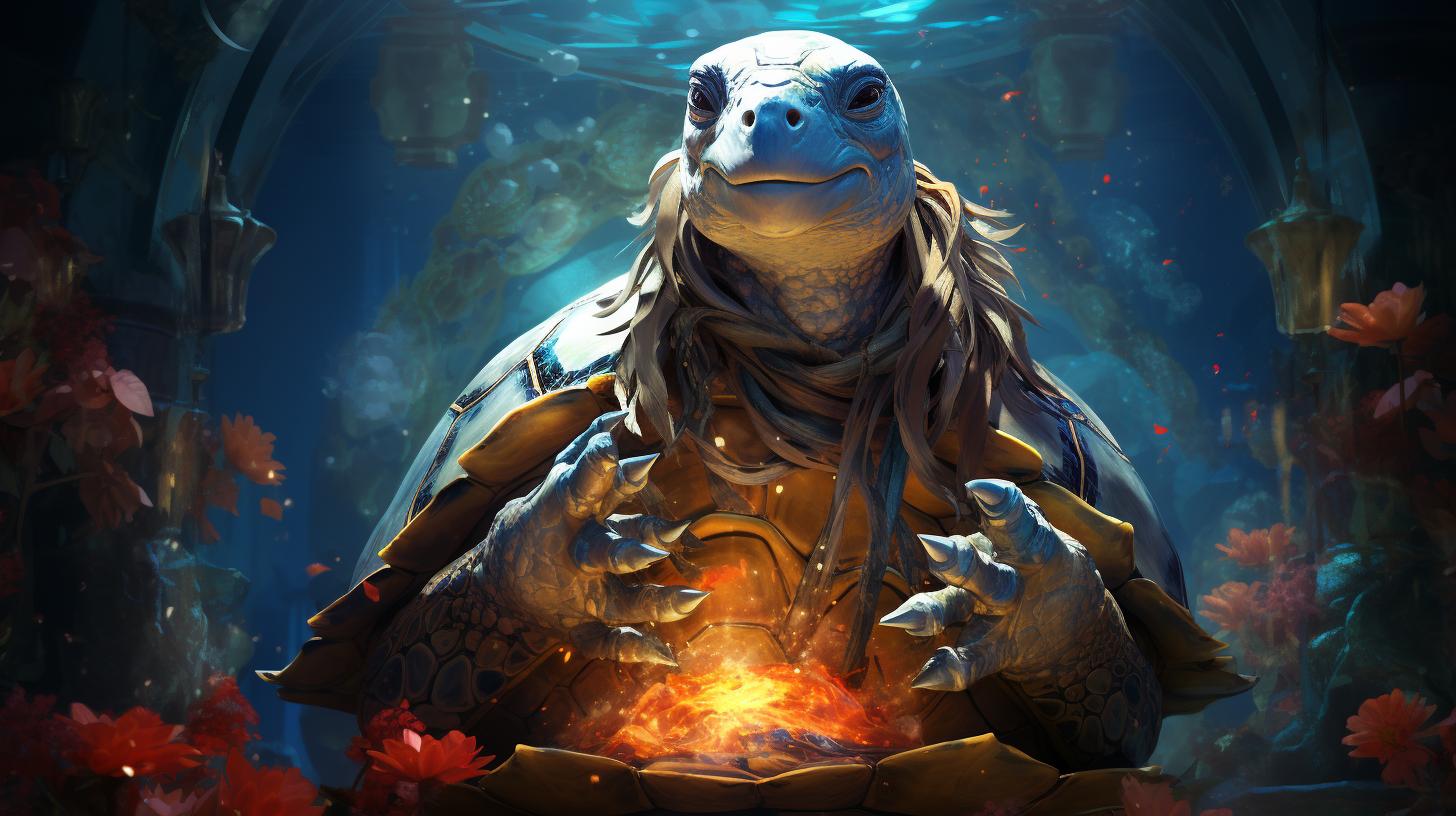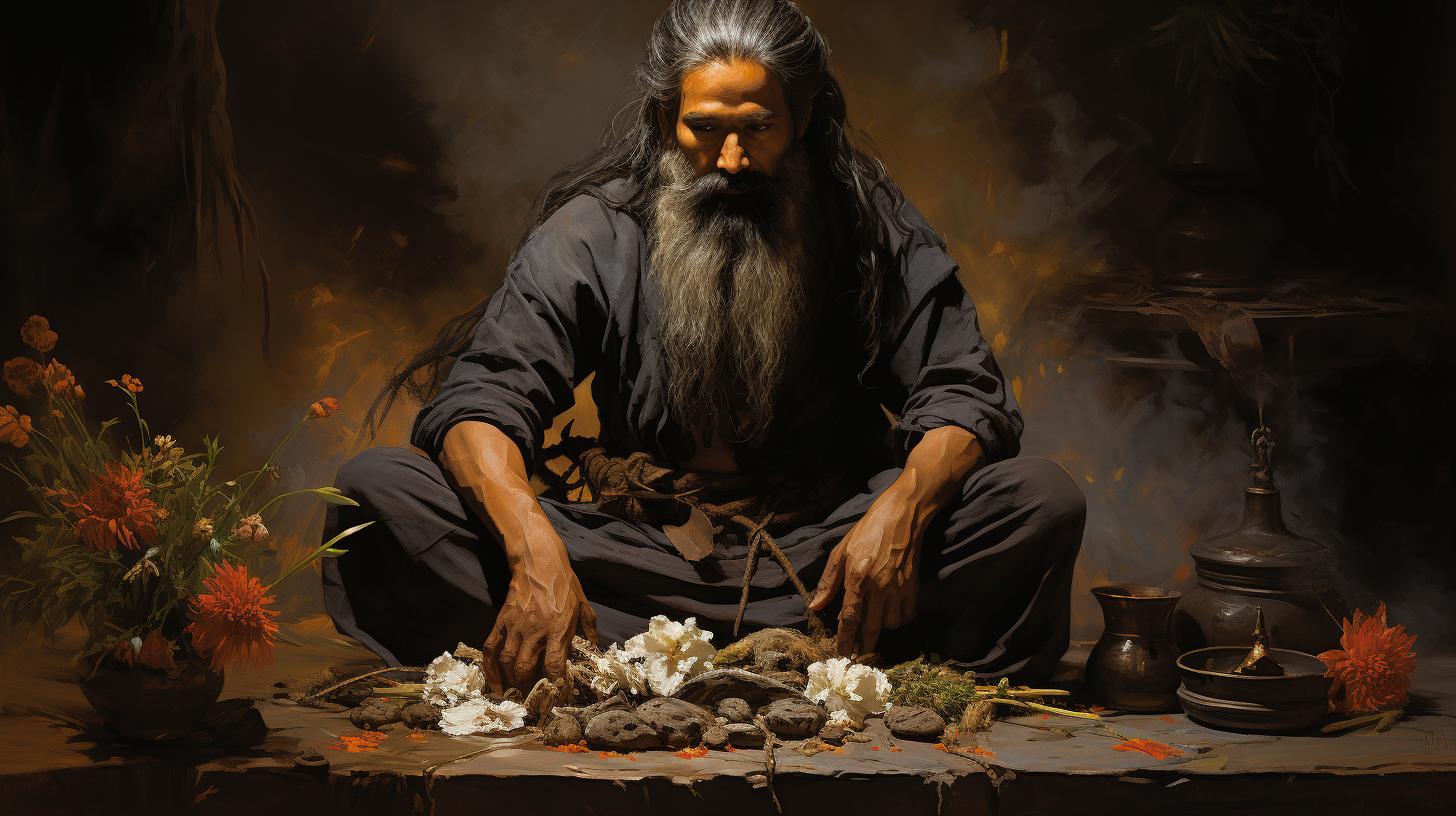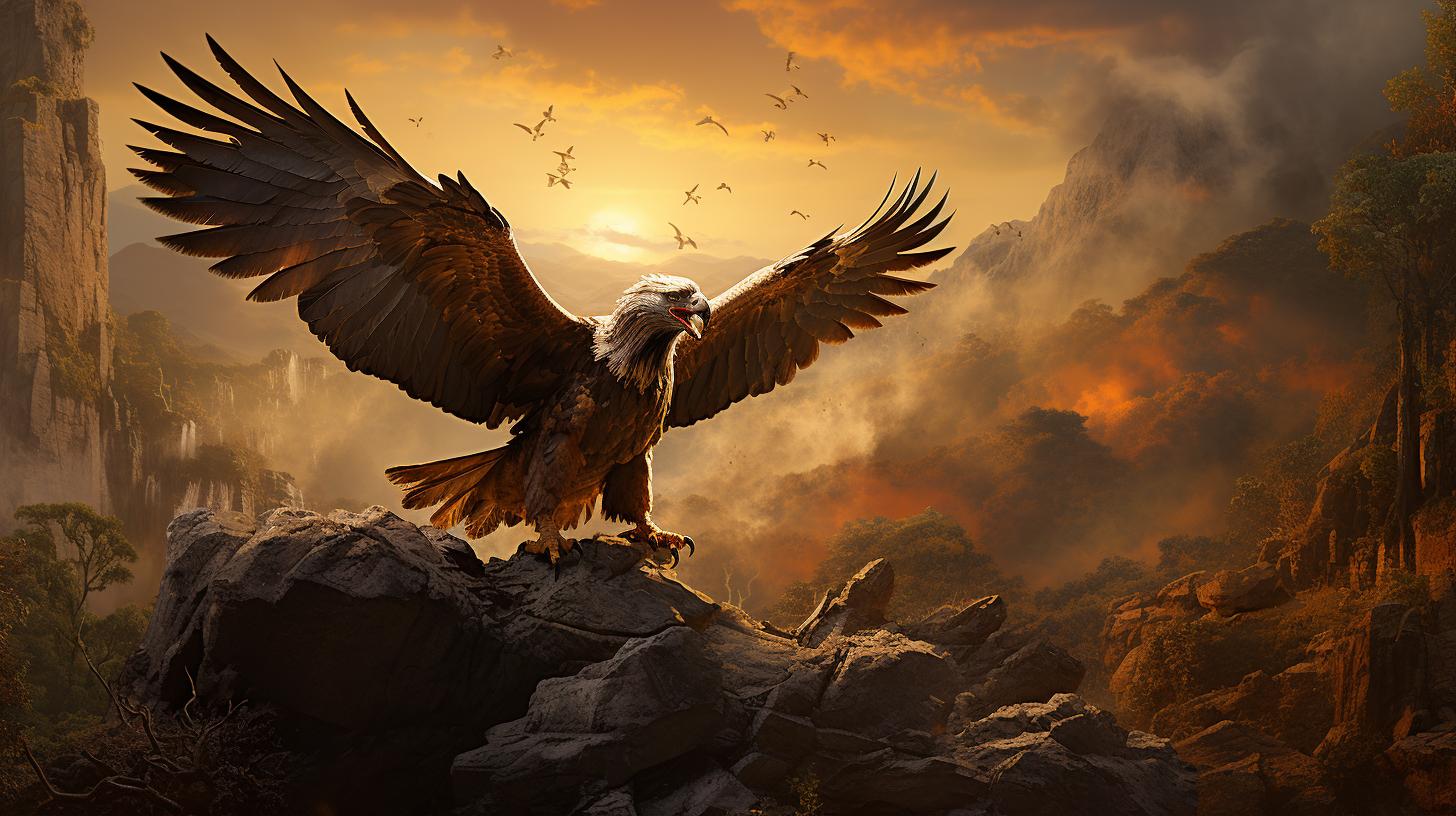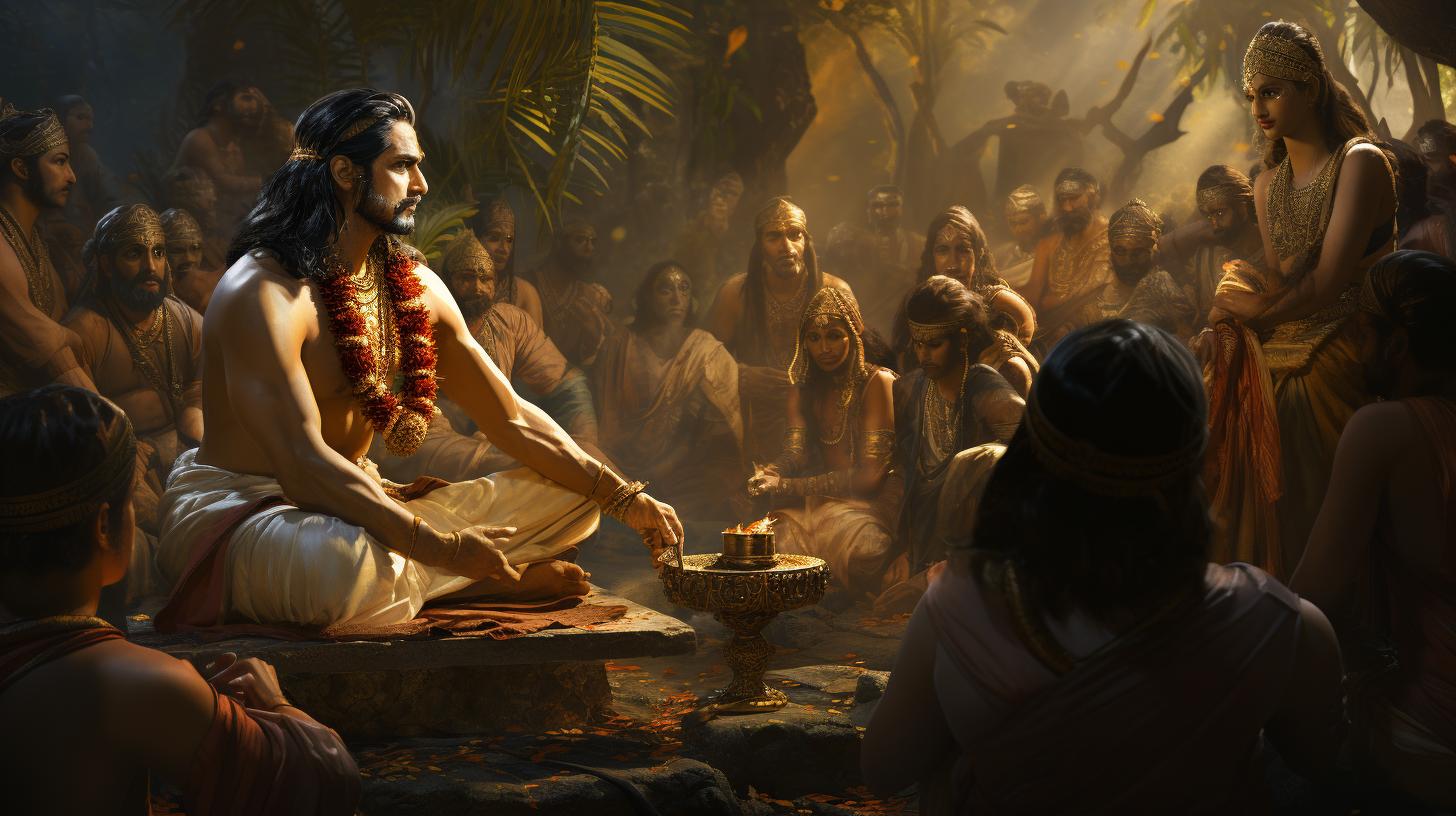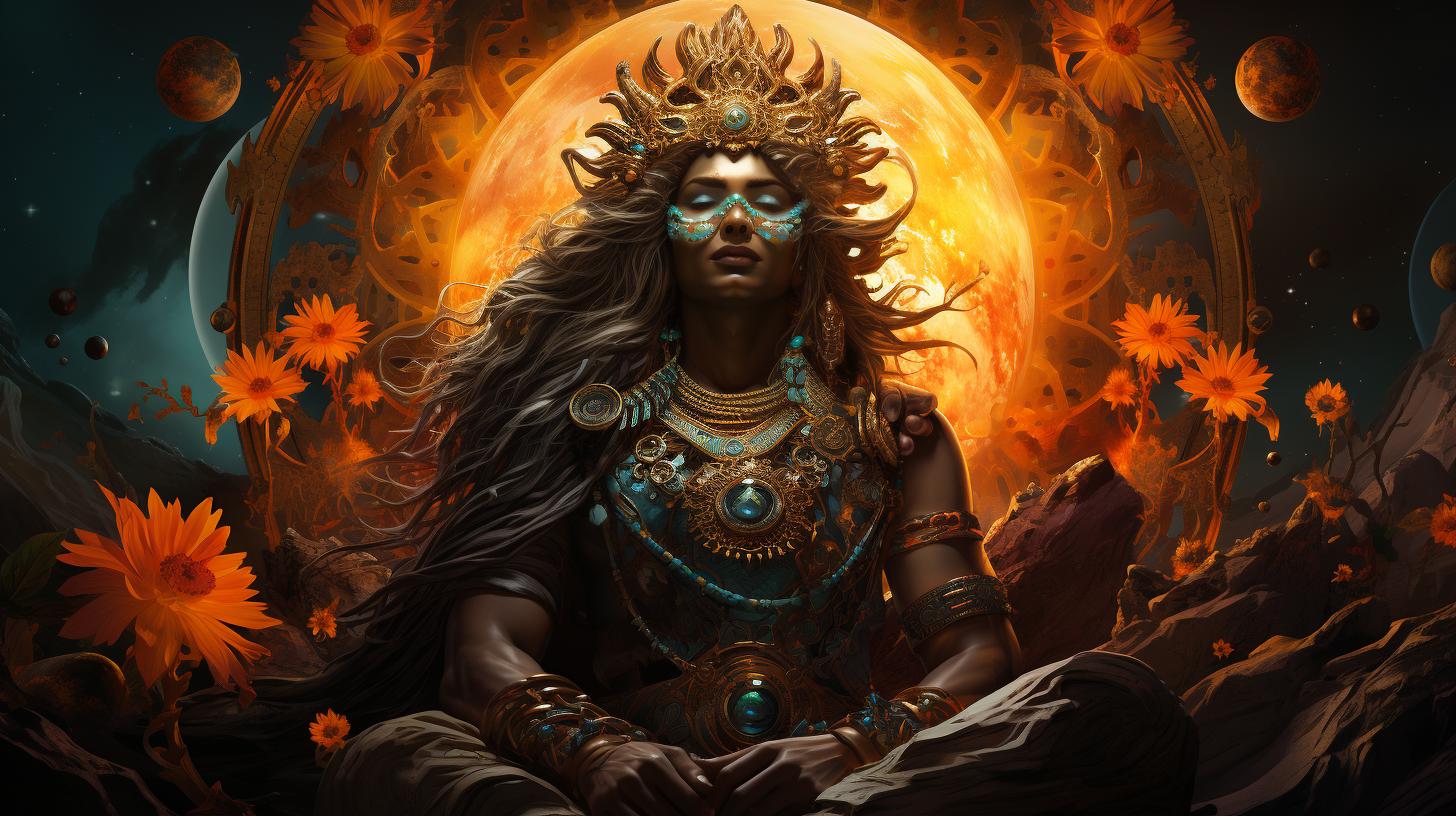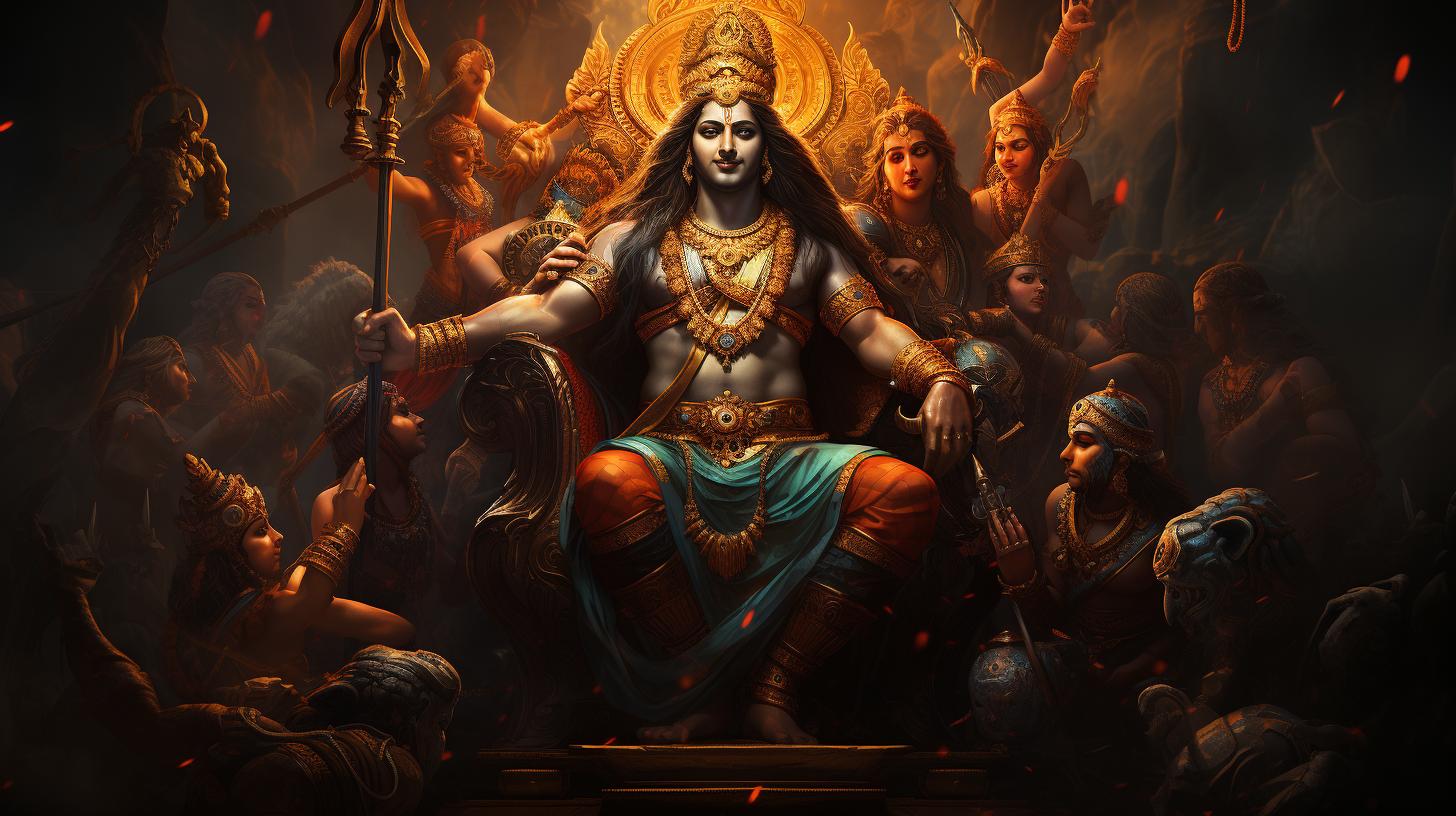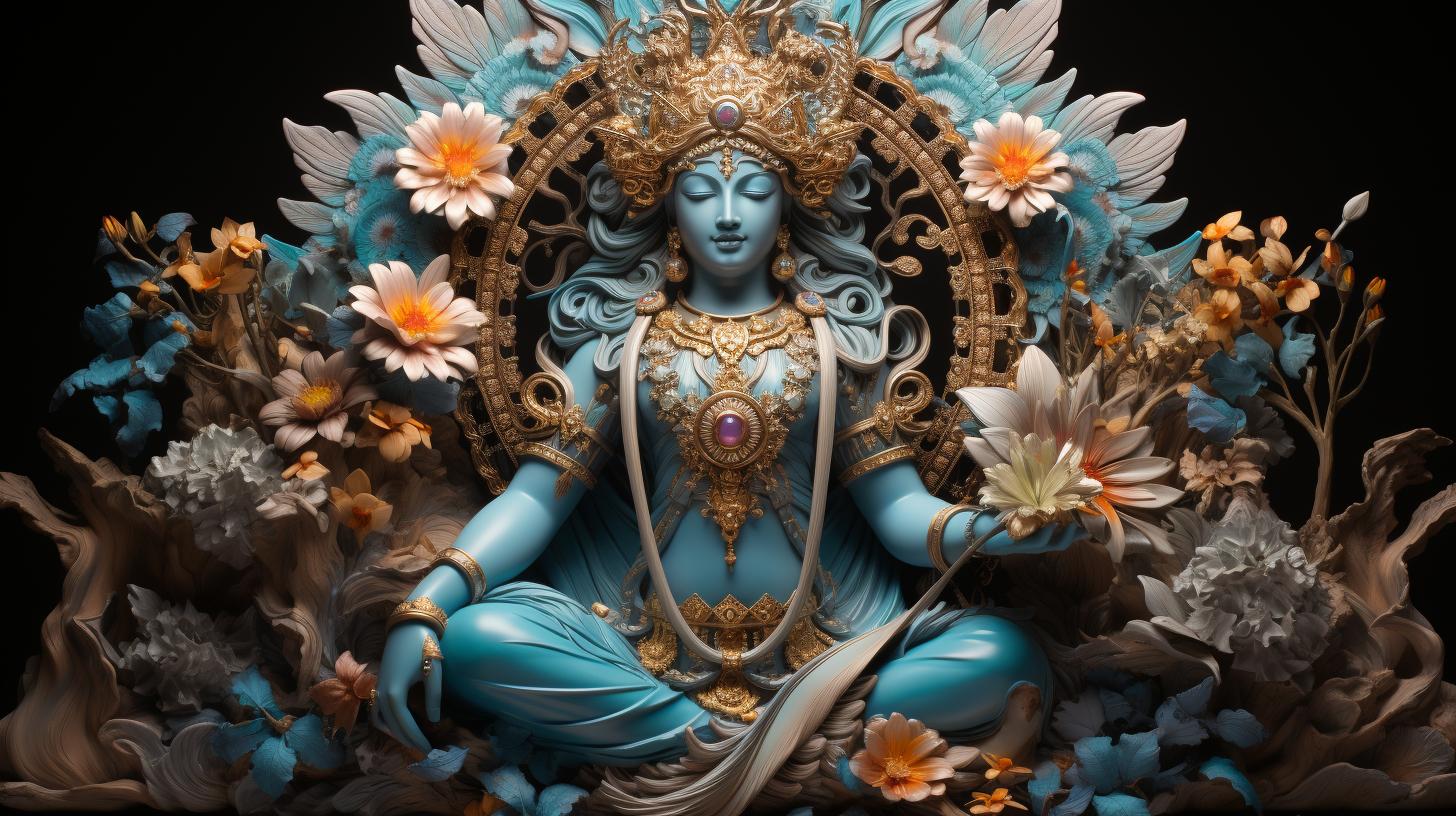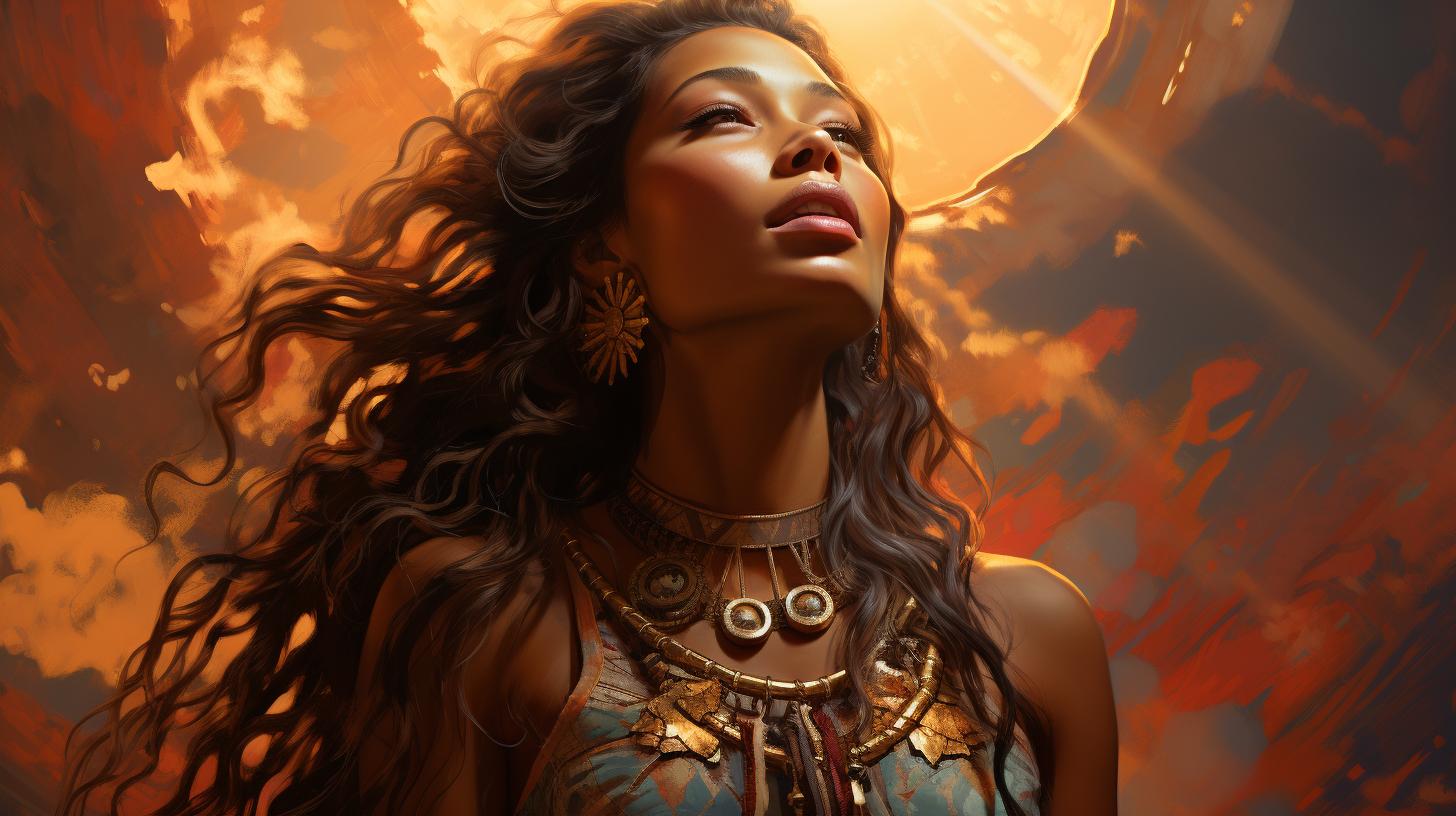Kurma Avatar of Vishnu: The Fascinating Story of Hindu Mythology
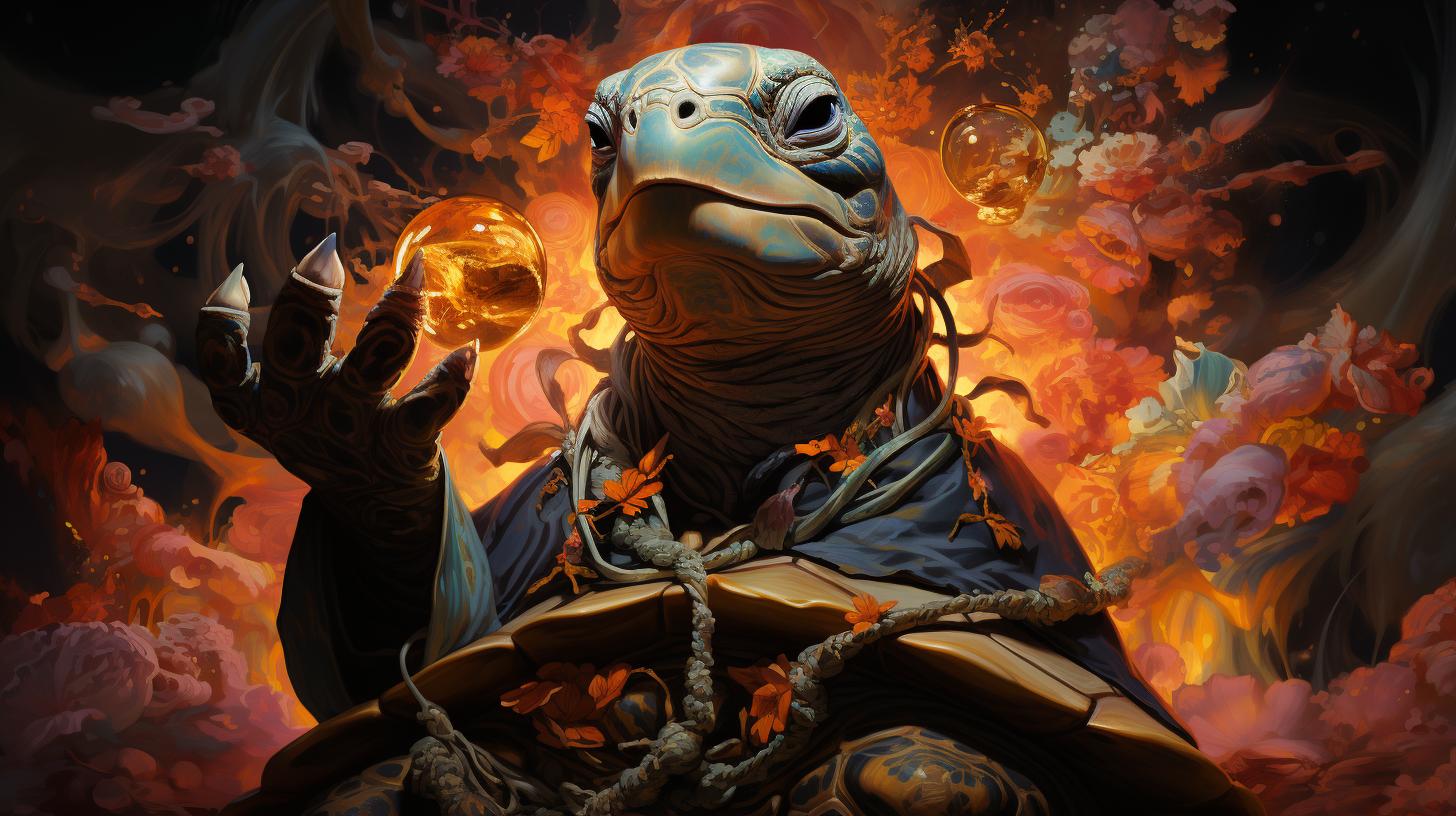
The Kurma avatar of Vishnu is an intriguing story from Hindu mythology. This divine incarnation played a pivotal role in the legendary churning of the ocean of milk, known as Samudra Manthan.
The gods sought Vishnu’s assistance after being weakened by the demons, and Kurma provided a strong foundation during the tumultuous process. Through this cosmic event, treasures were revealed, including the elixir of immortality.
Ultimately, the gods emerged victorious, and Kurma’s significance lies in the teachings of stability, balance, and perseverance. This article explores the various aspects and symbolism surrounding Kurma avatar in Hindu mythology.
The Second Avatar of Vishnu: Kurma
The Kurma avatar holds a significant place in Hindu mythology as the second incarnation of Lord Vishnu. This avatar, represented by a tortoise, has a deep-rooted origin and symbolism that holds immense importance in the Hindu faith.
Origin and Significance of Kurma Avatar
The Kurma avatar emerged when the gods sought Vishnu’s assistance in their battle against the demon forces. Vishnu proposed a plan to churn the ocean of milk, known as Samudra Manthan, to obtain the elixir of immortality.
His manifestation as Kurma played a crucial role in supporting the gods and ensuring the success of their endeavor.
Symbolism of the Tortoise Form
The Kurma avatar took the form of a tortoise, symbolizing stability, endurance, and patience. The tortoise’s ability to withdraw its limbs into its shell represents the importance of detachment and introspection, virtues that followers can learn from Kurma’s embodiment.
This form also signifies the divine strength that supports the entire creation.
The Legend of Samudra Manthan
The Legend of Samudra Manthan explores the incredible tale of the churning of the ocean of milk and its significance in Hindu mythology. This captivating story reveals the divine intervention of Vishnu and the critical role played by Kurma, the second avatar of Vishnu.
Indra’s Misfortune and Seeking Vishnu’s Help
The legend begins with Indra, the king of the gods, facing defeat at the hands of the demons due to a curse by the sage Durvasa. Distressed and weakened, the gods turned to Vishnu for assistance.
Realizing the gravity of the situation, Vishnu proposed the churning of the ocean of milk as a solution to regain their strength and defeat the demons.
Churning the Ocean of Milk: The Great Task
The gods and demons collaborated in the colossal task of churning the ocean of milk.
Mount Mandara became the mighty rod used to stir the ocean, while the serpent Vasuki acted as the rope to twist the mountain. Kurma, taking the form of a tortoise, provided a steady foundation atop which the mountain rested during the process.
Kurma’s Role in Supporting the Mount Mandara
Amidst the arduous churning process, Kurma supported the weight of Mount Mandara on his back, ensuring its stability and preventing obstructions. This pivotal role played by Kurma showcases his unwavering strength and devotion in aiding the gods’ cause.
Unveiling Treasures and the Emergence of Amrita
The arduous churning gave rise to numerous treasures that emerged from the ocean. Among these precious treasures was the divine elixir of immortality, known as Amrita. Its appearance brought hope and rejuvenation, bolstering the gods’ determination to retrieve it.
Mohini’s Deception and the Battle for Immortality
However, the demons, driven by their desire for immortality, sought to seize Amrita for themselves. Vishnu, taking on the form of Mohini—a mesmerizingly beautiful woman—deceived the demons and successfully retrieved the Amrita from their grasp, ensuring that it reached the gods instead.
Victory of the Gods and Restoration of Balance
Fueled by the strength provided by the Amrita, the gods vanquished the demons and reestablished harmony and equilibrium in the divine realm. The victory of the gods was made possible due to the steadfastness and support of Kurma throughout the grueling process of Samudra Manthan.
The Divine Purpose and Teachings
The story of Kurma Avatar not only holds a deep significance in Hindu mythology but also imparts valuable lessons to humanity. Through this divine incarnation, we learn about the qualities of stability, perseverance, balance, and the eternal struggle between good and evil.
Let us explore these teachings further:
Lessons from Kurma Avatar: Stability and Perseverance
Kurma Avatar represents the importance of stability and perseverance in the face of challenges. Just as Kurma provided a firm foundation during the churning of the ocean of milk, we are reminded to stay grounded and resolute when confronted with adversity.
The avatar teaches us that with patience and determination, we can overcome any obstacle that comes our way.
Understanding the Importance of Balance
The story of Kurma Avatar also emphasizes the significance of balance in our lives. As the deities and demons worked together to churn the ocean, it symbolizes the need for harmony between opposing forces.
Kurma’s role as the stabilizing force highlights the necessity of finding equilibrium amidst the chaos. It serves as a reminder for us to seek balance in our actions, decisions, and relationships, ultimately leading to a more fulfilling life.
The Eternal Struggle of Good and Evil
Kurma Avatar embodies the eternal struggle between good and evil. As the demons attempted to claim the nectar of immortality, Vishnu, in the form of Mohini, tactfully ensured that the righteous gods received it instead.
This narrative teaches us that the battle between good and evil is an ongoing and fundamental aspect of existence. It encourages us to align ourselves with righteousness and make conscious choices to uphold moral values.
Kurma Avatar in Hindu Mythology
Brief Overview of Vishnu’s Dashavatar
Vishnu’s Dashavatar refers to the ten incarnations of Lord Vishnu in Hindu mythology. Each avatar symbolizes a different aspect of the divine and plays a significant role in preserving cosmic order.
The ten avatars are Matsya (the fish), Kurma (the tortoise), Varaha (the boar), Narasimha (the half-lion, half-man), Vamana (the dwarf), Parashurama (the warrior with an axe), Rama (the prince and king), Krishna (the divine cowherd), Buddha (the enlightened one), and Kalki (the future avatar).
Among these avatars, Kurma holds a special place.
Kurma Avatar: Its Place Among the Incarnations
Kurma Avatar, the second incarnation of Vishnu, represents endurance, stability, and focus. Depicted as a tortoise, Kurma played a crucial role in the legend of Samudra Manthan, the churning of the ocean of milk.
By acting as a firm foundation to support the Mount Mandara during the churning process, Kurma enabled the emergence of valuable treasures, including the elixir of immortality, known as Amrita. Kurma’s unwavering dedication highlights the importance of perseverance and steadfastness in the face of challenges.
An Example of Kurma’s Significance
To understand Kurma’s significance among Vishnu’s incarnations, one can reflect on the nature of the tortoise. The tortoise is known for its ability to withdraw its limbs within its shell, symbolizing inner strength and protection.
Kurma’s presence reinforces the concept of finding inner stability amidst the chaos of life. Moreover, Kurma’s role in obtaining Amrita emphasizes the importance of spiritual and emotional balance, as it was the elixir that restored harmony and equilibrium to the universe.
The Role of Kurma Avatar Today
In present times, Kurma’s teachings continue to resonate as they offer guidance on maintaining inner resilience and staying grounded amidst challenges. The symbolism of the tortoise serves as a reminder to find strength within ourselves during difficult times.
By embracing the essence of Kurma’s teachings, one can navigate through the ups and downs of life with grace and stability, ultimately achieving a state of harmony and balance.
- Kurma Avatar represents endurance, stability, and focus.
- Kurma played a crucial role in the legend of Samudra Manthan.
- Kurma’s unwavering dedication teaches the importance of perseverance.
- Kurma’s significance lies in finding inner stability and balance.
- Kurma’s teachings guide individuals towards resilience and groundedness.
The Significance of the Churning Stick and the Serpent Vasuki
The churning stick, also known as the mandara, holds great symbolism in the Kurma avatar story.
It represents the tool used to churn the ocean of milk and is made from the Mount Mandara itself. As a divine manifestation, the churning stick signifies the instrumental role played by Kurma in the saga.
The Role of the Churning Stick and Its Symbolism
The churning stick serves as the pivotal point for the churning process, functioning as the axis around which the task rotates. Its symbolism extends beyond its practicality, representing stability, resilience, and balance.
The churning stick highlights the importance of steadfastness and unwavering determination in overcoming challenges and attaining desirable outcomes.
Vasuki: The Serpent and Its Connection to Kurma Avatar
Vasuki, the mighty serpent, holds a prominent role in the Kurma avatar story. Depicted as the rope used for churning, Vasuki symbolizes power, strength, and control. By coiling around the Mount Mandara and acting as the rope for churning, Vasuki displays its unwavering support for Kurma in the face of the arduous task at hand.
The connection between Vasuki and Kurma exemplifies the interdependence and collaboration required to surmount challenges. Kurma’s reliance on Vasuki emphasizes the idea that success often necessitates the cooperation and harmony of different elements, working together seamlessly towards a common goal.
Kurma Avatar and Science
The Kurma avatar of Vishnu, with its profound mythological significance, has also piqued the interest of those exploring scientific perspectives. This section delves into the possible scientific explanations and interpretations of the elements associated with the Kurma avatar.
Exploring the Mythological Elements from a Scientific Perspective
When examining the Kurma avatar from a scientific standpoint, one can explore the symbolism and underlying concepts portrayed in the story. The representation of Kurma as a tortoise, for instance, can be seen as an allegorical portrayal of adaptiveness and resilience in the face of challenges.
Furthermore, the act of churning the ocean of milk can be interpreted as a metaphorical representation of cycles and transformations found in nature, such as the movement of tectonic plates or the circulation of ocean currents.
Possible Geological and Astronomical Explanations
Geologically, the depiction of Mount Mandara as the churning stick and the serpent Vasuki as the rope can be seen as symbolic representations of geological features and forces. The tectonic activity and volcanic eruptions along subduction zones, for example, may have inspired the visual imagery of the story.
Astronomically, the emergence of treasures and the elixir of immortality (Amrita) during the churning process can be connected to celestial events. The discovery of celestial bodies, the understanding of stellar evolution, and the identification of comets and meteors may have influenced the mythical representation of divine treasures being revealed.
Exploring the Potential Scientific Significance
While it is important to approach mythology with respect for its cultural and spiritual dimensions, exploring the scientific aspects of stories like that of the Kurma avatar can provide intriguing insights.
These scientific interpretations offer alternative lenses through which we can appreciate the rich symbolism and universality present in ancient myths.
By examining the Kurma avatar and its associated elements from a scientific perspective, we gain a deeper understanding of the intricate connections between mythology, nature, and the cosmos.
Kurma Avatar: Historical and Cultural Impact
The Kurma Avatar holds immense historical and cultural significance in Hindu mythology. Its influence can be observed in ancient Indian art and literature as well as in modern devotion and worship.
Kurma Avatar in Ancient Indian Art and Literature
Ancient Indian art and literature depict the Kurma Avatar in various forms, symbolizing its importance in the cultural fabric of the time. Sculptures, paintings, and scriptures showcase Kurma as a majestic tortoise, often depicted alongside deities and celestial beings.
These artistic interpretations reflect the reverence and admiration for this avatar’s role in the Samudra Manthan legend.
Kurma Avatar in Modern Devotion and Worship
Kurma Avatar continues to be a revered figure in modern Hindu devotion and worship. Temples dedicated to Vishnu often feature sculptures or paintings representing Kurma Avatar, reminding devotees of the avatar’s significance in Hindu mythology.
Devotees engage in rituals, prayers, and hymns to express their faith and seek blessings from Kurma Avatar for stability, perseverance, and balance in their lives.
The cultural impact of Kurma Avatar extends beyond religious practices.
It serves as a reminder of the interconnectedness between ancient traditions and contemporary beliefs, enriching the cultural tapestry of Hinduism as a whole.
Variations and Depictions of Kurma Avatar
Kurma Avatar in Different Hindu Texts and Traditions
Throughout Hindu scriptures and traditions, the Kurma avatar of Vishnu is mentioned in various forms and contexts. Different texts like the Bhagavata Purana, the Mahabharata, and the Vishnu Purana provide distinct portrayals of Kurma avatar and its significance.
In these sacred texts, Kurma avatar is depicted as the divine turtle who supports the churning of the ocean of milk and retrieves the elixir of immortality, Amrita. The stories highlight Kurma’s contribution to the cosmic events and emphasize the importance of his unwavering presence.
Artistic Representations and Symbolism
The artistic representations of Kurma avatar vary across different regions and eras. In paintings, sculptures, and temple carvings, Kurma is often depicted as a turtle with a majestic form, symbolizing stability, endurance, and protection.
The artwork showcases Kurma’s role as the pivotal base during the churning of the ocean and highlights his importance in maintaining balance and facilitating the divine task. The symbolism of Kurma as a turtle exemplifies the resilience and steadfastness required to overcome challenges in life.
Visual Depictions
- Paintings: Numerous traditional Indian paintings portray the Kurma avatar, focusing on his distinct turtle form and divine aura. These artworks showcase the vibrant colors and intricate details, capturing the essence of Kurma’s role in the Samudra Manthan.
- Sculptures: Intricate sculptures found in ancient temples depict Kurma in various postures, encapsulating the essence of his divine nature.
The detailed carvings highlight the importance of Kurma as a fundamental figure in Hindu mythology.
Symbolic Representations
- Stable Foundation: The turtle form of Kurma symbolizes the importance of having a solid foundation in life. Just as the turtle supports the mount Mandara, Kurma teaches us the significance of staying grounded and resolute during challenging times.
- Balance and Harmony: Kurma’s role in maintaining balance during the churning of the ocean symbolizes the need for balance and harmony in one’s life.
It serves as a reminder to find equilibrium between opposing forces and seek harmony in all aspects of existence.
- Protection and Guidance: Kurma’s presence represents divine protection and guidance. By relying on Kurma’s energy, individuals can find strength, protection, and guidance to navigate through the tumultuous phases of life.
These artistic variations and symbolism associated with Kurma avatar enrich the understanding and appreciation of this divine incarnation within Hindu culture and spirituality.
Kurma Avatar Story: a Source of Inspiration
The story of Kurma Avatar holds profound wisdom and serves as a source of inspiration for individuals seeking to overcome challenges and navigate through life’s journey. This divine incarnation of Lord Vishnu provides valuable lessons that resonate with humanity and offer guidance in times of adversity.
Kurma Avatar: Lessons for Overcoming Challenges
One can draw inspiration from Kurma Avatar’s unwavering strength and resilience in facing daunting trials. Here are some key lessons we can learn:
- Perseverance: Kurma Avatar teaches us the importance of perseverance in the face of adversity.
Despite the tremendous task of supporting the mountain during the churning of the ocean, Kurma remained steadfast, never giving up.
- Endurance: The story of Kurma Avatar reminds us that endurance is vital when facing challenges.
Just as Kurma patiently endured the immense weight of Mount Mandara, we too can find strength in enduring difficult times.
- Strength in Stability: Kurma symbolizes stability and the ability to stay grounded amidst chaos.
In turbulent times, cultivating stability within ourselves helps us navigate through challenges with clarity and resilience.
- Teamwork: Kurma Avatar’s story emphasizes the power of unity and collaboration. The gods and demons joined forces, demonstrating that working together can yield success even in the face of insurmountable obstacles.
How Kurma Avatar Relates to Humans’ Journey
Kurma Avatar’s story also holds relevance in understanding the human journey and our spiritual evolution:
- Symbolism of Kurma’s Form: The representation of Kurma as a tortoise speaks to the importance of finding inner refuge and protection during challenging times.
Just as Kurma found strength and stability in his form, we too must seek inner strength and resilience within ourselves.
- Balance and Harmony: Kurma Avatar’s role in restoring balance during the churning of the ocean emphasizes the significance of maintaining balance in our lives.
Striving for balance between our responsibilities, relationships, and personal well-being leads to a more fulfilling journey.
- The Dance of Good and Evil: Kurma’s involvement in the battle between gods and demons represents the eternal struggle between good and evil.
This reminds us of the importance of discernment and choosing the path of righteousness amidst the temptations and challenges we encounter.
From Kurma Avatar’s story, we learn that challenges are an inherent part of life, but they also provide opportunities for growth, nurturing resilience, and inner strength.
By internalizing the lessons from Kurma Avatar, we can navigate our own personal journeys with courage, perseverance, and a sense of balance.
Exploring the Mythological Universe of Vishnu
Exploring the vast mythological universe of Vishnu allows us to delve into the divine realm and gain a deeper understanding of the Hindu mythology surrounding this revered deity. This section focuses on two key aspects: the divine realm and the interconnections between Vishnu’s avatars.
The Divine Realm and Vishnu’s Expansive Universe
Within Hindu mythology, Vishnu is revered as the preserver and protector of the universe. His divine abode is Vaikuntha, a realm of eternal bliss and harmony. Vaikuntha is described as a place beyond the material world, where Vishnu resides with his consort Lakshmi and other celestial beings.
In this divine realm, Vishnu governs the cosmic cycles and ensures the preservation of dharma, the cosmic order. His presence is symbolized through numerous sacred sites, temples, and pilgrimage destinations dedicated to him across the Indian subcontinent.
Vishnu’s universe extends far beyond the earthly realm, encompassing different dimensions and realms inhabited by various deities, demigods, and supernatural beings. Understanding the scope and intricacies of this mythological universe allows us to appreciate the magnitude of Vishnu’s influence and role as a divine protector.
Interconnections between Vishnu’s Avatars
The Dashavatar of Vishnu
Symbolic Unity and Purpose
Lessons from Vishnu’s Avatars
Devotion and Worship
Vishnu’s divine incarnations, known as avatars, play a crucial role in maintaining cosmic balance and addressing the challenges that arise. The Dashavatar, consisting of ten main avatars, demonstrates the diverse manifestations of Vishnu’s power and divine purpose.
Each avatar holds a specific role and purpose within the grand narrative of Hindu mythology. Although distinct, these avatars are interconnected through their shared goal of preserving and restoring cosmic order.
Examining the stories and teachings associated with Vishnu’s avatars offers valuable insights into the core principles and values upheld in Hinduism. From the righteous and compassionate actions of Rama to the cosmic harmony represented by Kurma, each avatar imparts unique lessons regarding morality, duty, and spiritual growth.
Devotees of Vishnu often form personal connections with specific avatars based on their individual inclinations and spiritual aspirations. This deep devotion is expressed through rituals, prayers, and the creation of artistic representations that depict Vishnu and his avatars in various forms.
Exploring the mythological universe of Vishnu opens a gateway to ancient wisdom and profound spiritual insights. It allows us to connect to the grand tapestry of Hindu mythology and gain a deeper appreciation for the divine power and significance of Vishnu and his avatars.
.

